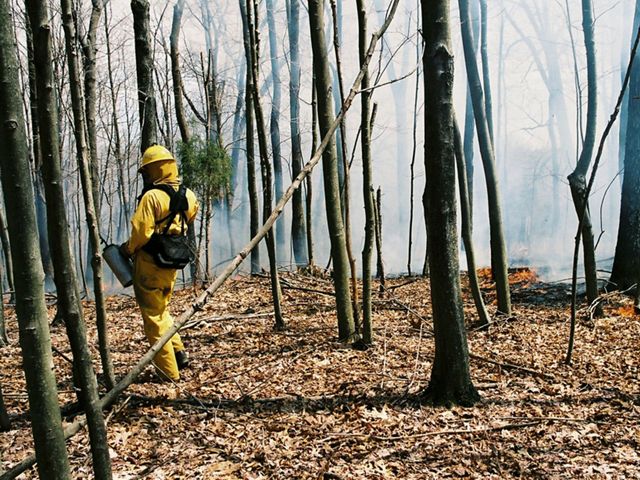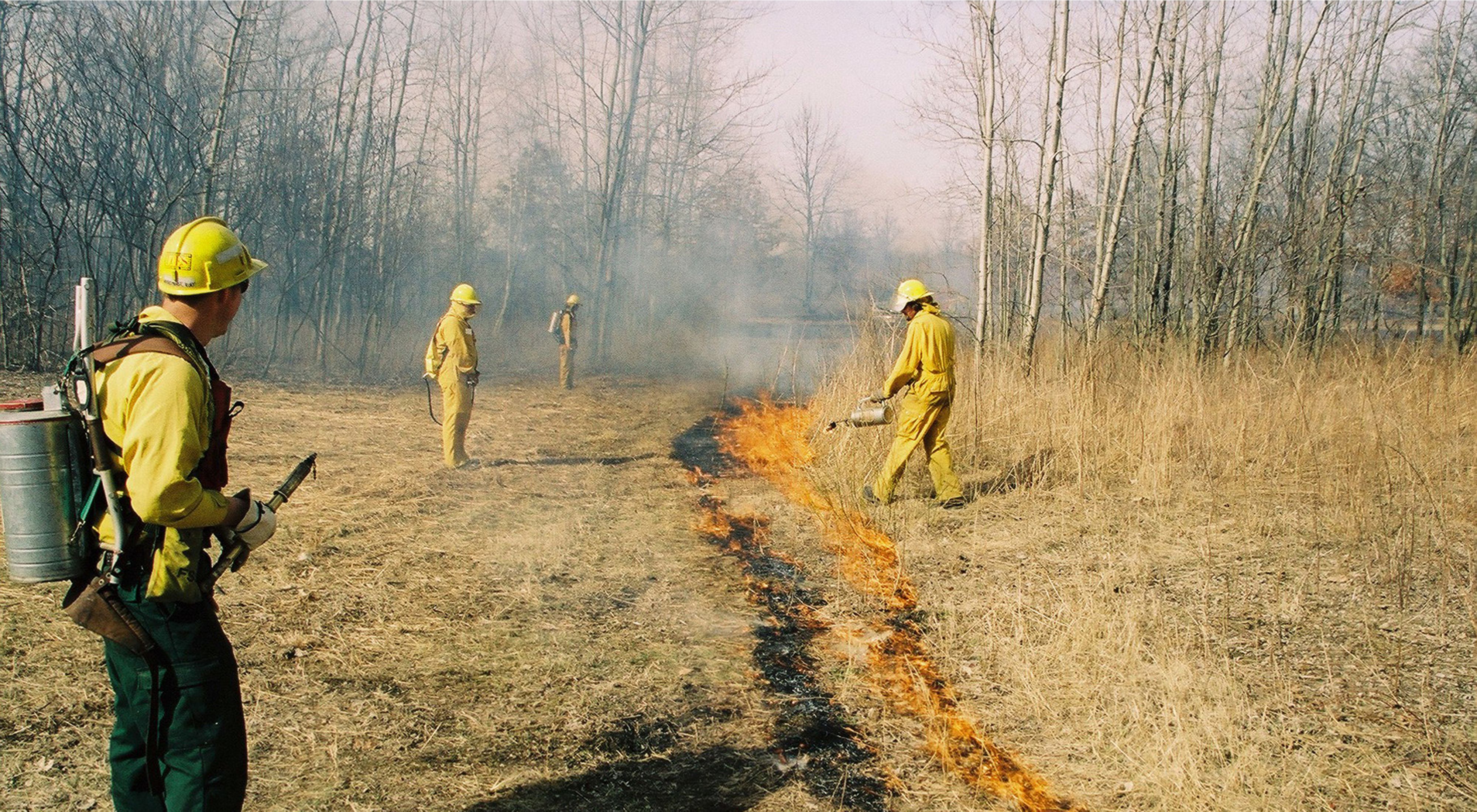Returning Controlled Fire to the Landscape
Low-intensity prescribed fires protect lives, homes and wildlife habitat.
For decades, fire suppression policies and land management practices removed nearly all fire from the landscape, preventing it from conducting its natural role in the environment. This has led to the failing health of many natural habitats and the buildup of thick brush and undergrowth that can lead to dangerous and unnaturally intense wildfires.
But now, land managers are working with scientists to use prescribed fires – intentionally ignited and carefully managed– to mimic natural, low-intensity fire. The correct use of fire can save money, protect lives and improve wildlife habitat.
Fire is a natural act
Like rain or sunshine, fire is a natural event that plays an important role in the health of many habitats across Ohio. Without fire, many plant and animal species would disappear.
Prescribed fires help return landscapes to their natural balance with fire. They can enhance community safety by reducing the buildup of dead wood and other debris that can contribute to unnaturally intense wildfires. Fire can also improve watershed conditions by thinning dense stands of trees that absorb a great deal of water and reduce the flow of springs and streams.
Prior to European settlement, fire was a powerful force in shaping the forests and grasslands of Ohio. This was especially true in the western and southern regions of the state, due to climate, land forms and the presence of Native American people (who used fire extensively to encourage wild food plants, provide open hunting areas and clear undergrowth to allow for planting crops). Fire, much of it caused by early human activity, led to the development of Ohio’s extensive grassland, savannas and oak woodlands, and oak dominated forests.
“Altered fire regimes” – too much, too little or the wrong kind of fire – are a major threat to the Earth’s natural habitats and biodiversity. The Conservancy is working at many locations in Ohio – with private citizens, government agencies and others – to bring critical habitats back into balance with fire.

The Nature Conservancy has recently worked with several government and non-governmental group to create the Ohio Prescribed Fire Council, Inc. The mission of this group is to foster cooperation among the prescribed fire community, while promoting the safe use of prescribed fire as a natural resource management tool for Ohio's ecosystems.
Some Ohio Examples include:
- The endangered Karner blue butterfly has only one food source as a caterpillar: the lupine plant which needs fire to open up forest canopies and allow sunlight to reach the ground where it grows. The Conservancy is using prescribed burns at our Kitty Todd Preserve – the only known home in Ohio for the Karner – to regenerate lupine and other native plants.
- At the Edge of Appalachia Preserve system, fire is used to restore and maintain xeric limestone prairies, a globally rare plant community, for the benefit of many species of rare plants.
